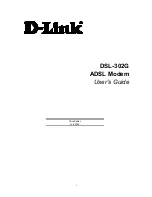
Quantum and Evolution Series Installation and Operating Handbook
8-8
Where:
•
Lc is the local clock accuracy (e.g.
1 x 10
-9
),
•
Rc is the remote clock accuracy (e.g.
1 x 10
-11
)
•
Ms is the Minimum slip period in days (e.g. 40 days)
then the required Plesiochronous Buffer size (middle to end) in seconds is:
Buffer size (Bs) = Ms x 24 x 60 x 60 x (Lc + Rc).
Simplifying, allowing a factor of two (end to end buffer, not middle to end) and allowing 2mS
for the Doppler shift gives:
Bs = .002 + 172800 x Ms x (Lc + Rc) seconds.
Using the example figures above gives 0.00898 seconds, requiring 9ms to absorb the
plesiochronous effects. To this must be added any Doppler requirement (i.e. 2ms for each
satellite hop).
8.1.3.6 G.703 Clock Extension
The modem can extend a G.703 (T1 or E1) timing reference to the distant end of a
satellite link, regardless of actual data rate of that link.
This is achieved via a G.703 clock extension feature that propagates a high stability
reference from the
hub
to the
remote
. It is necessary for a high stability E1/T1
reference signal from a GPS receiver to bes fed to only the
hub
modem (via the
G.703 balanced or unbalanced connectors) thereby saving the cost of multiple GPS
receivers at the remote sites.
The remote modem can then generate a T1/E1 signal synchronized to the local
modem’s GPS signal (via the satellite clock) making use of the G.703 balanced or
unbalanced connectors. This signal can then be used for synchronizing the remote
site equipment.
Furthermore, even if a GPS receiver is not present in the network the remote modem
can
still
synthesize a T1/E1 synchronization signal; in this case the synchronization
signal will be locked to the satellite clock.
Tx Operation
This is a special case of Internal Tx Clock. When internal clock is selected
and
the
selected terrestrial interface is
not
G703 then a further question is asked:
Forward the G703 clock as a clock reference?
Options:
OFF
E1
T1
Factory default:
OFF
















































